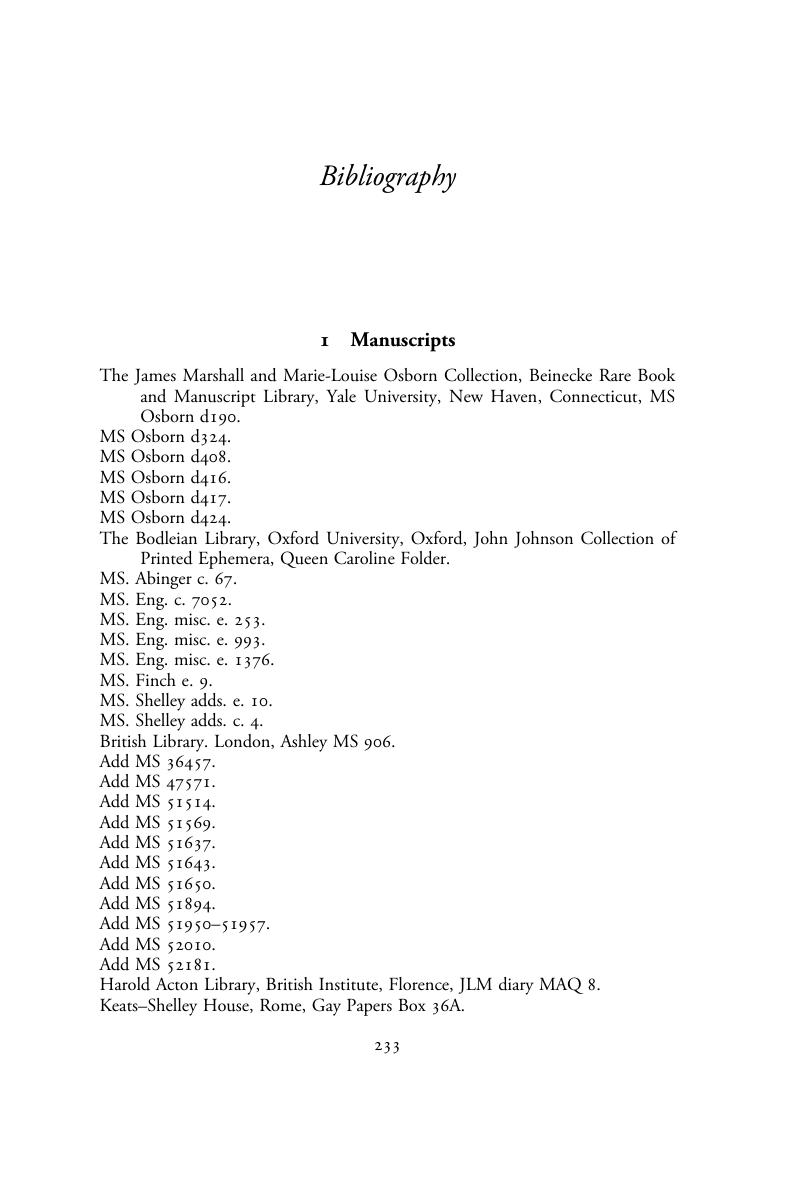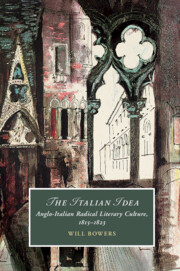Book contents
- The Italian Idea
- Cambridge Studies in Romanticism
- The Italian Idea
- Copyright page
- Dedication
- Epigraph
- Contents
- Preface
- Acknowledgements
- Note on the Text
- Short Titles and Abbreviations
- Introduction
- Chapter 1 Italians and the ‘Public Mind’ before 1815
- Chapter 2 London 1816
- Chapter 3 London 1817–1819
- Chapter 4 Veneto 1817–1819
- Chapter 5 London and Naples, 1819–1821
- Chapter 6 Pisa 1820–1822
- Coda
- Notes
- Bibliography
- Index
- Cambridge Studies in Romanticism
- References
Bibliography
Published online by Cambridge University Press: 19 December 2019
- The Italian Idea
- Cambridge Studies in Romanticism
- The Italian Idea
- Copyright page
- Dedication
- Epigraph
- Contents
- Preface
- Acknowledgements
- Note on the Text
- Short Titles and Abbreviations
- Introduction
- Chapter 1 Italians and the ‘Public Mind’ before 1815
- Chapter 2 London 1816
- Chapter 3 London 1817–1819
- Chapter 4 Veneto 1817–1819
- Chapter 5 London and Naples, 1819–1821
- Chapter 6 Pisa 1820–1822
- Coda
- Notes
- Bibliography
- Index
- Cambridge Studies in Romanticism
- References
Summary

- Type
- Chapter
- Information
- The Italian IdeaAnglo-Italian Radical Literary Culture, 1815–1823, pp. 233 - 259Publisher: Cambridge University PressPrint publication year: 2020



